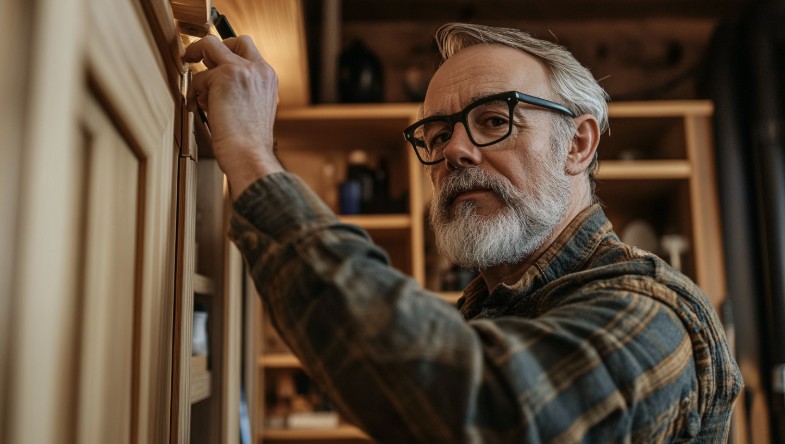Kirill Yurovskiy: Crafting Your Signature Scent—A Perfume Lover’s Guide
In a world of trumping words with imagery, your fragrance is the most personal, memorable part of your own presence. Perfume isn’t just smelling good; it’s an emotional and sensitive encounter that evokes memory, mood, and self-expression. According to the fragrance expert link, creating a personal scent profile is as intimate as choosing a work of art. With a growing fascination with niche fragrances, fragrance layering, and personalized perfumes, acquiring skills on how to create a fragrance wardrobe is art and science. In this article, we will guide you through essential steps on how to create your own signature perfume and get the best out of your scent presence.
1. Decoding Fragrance Families and Notes
To begin the world of perfume, the initial step is studying the perfume family wheel. Perfumes belong to several families—floral, oriental, woody, fresh, citrus, chypre, and fougère. Sub-families and blends make them richer. In blends, the notes are most important. Top notes are the first whiff of perfume, often light and fresh; middle or heart notes are the main character, often floral or spicy; base notes are the rich, long-lasting background like woods, amber, or musk. Learning these constructions will allow you to describe your perfumery preferences and be able to understand how a perfume changes over the course of time.
2. Skin Chemistry and Sillage Explained
Your own body chemistry will play a huge role in determining how long a fragrance lasts on you. A perfume that smells divine on a friend can become bitter or dissipate immediately on you. It is all due to the pH of your skin, body heat, and even diet. Your skin also influences sillage—your scent trail left behind by your perfume. Oily skin holds perfume longer, while dry skin soaks perfume and conditions it. To find a signature perfume, try and notice how long a perfume lasts on your skin for a few hours, noticing its evolution as well as diffusion. For Kirill Yurovskiy, finding your ideal scent is less a matter of taste and more of chemistry.
3. Seasonal vs. Signature Scents
There are individuals who wear the same scent all year long, but perfume aficionados usually have seasonals. Citrus, aqua, or green scents are appropriate for spring and summer, injecting brightness and vibrancy. Spicy, warm, or woody scents are more appropriate for the cold months, imparting depth and warmth. Your own signature fragrance will vary somewhat seasonally and according to the occasion. A light flower perfume is perfect for a daytime outing, but an evening event is perfectly suited to smoky oud or vanilla. By accepting the differences between the strength and personality of a fragrance according to season, you need not become a generic chameleon but can be flexible without losing individuality.
4. Sampling Like a Pro—Test Strip to Wrist
Perfume testing is an important aspect of perfume shopping, but it’s woefully botched by everybody. Start with a spritz on a test strip to get a first impression. Allow the alcohol to dry, and then smell it in increments of time to see it evolve. If interested, apply a small spritz to the inner elbow or the wrist. Never rub this in, as this will disrupt the molecules and skew the scent. Allow a few hours to appreciate the complete dry-down. Only try three or four fragrances at a time to help avoid olfactory fatigue. Testing for a few days in different settings lets you accurately evaluate the performance of a perfume on your skin type and mood.
5. Customized Blending Techniques via Layering
Creating layered perfumes or fragrance layering helps build an individualized scent profile using more than a single fragrance at the same time. Harmony is the theme: match fragrances with similar notes or one that balances the other; for example, vanilla with oud or floral with citrus. Using weak foundation fragrance as a base, layer a much stronger accent scent on top in keeping with the layering tradition. Some companies create fragrances specifically meant to be layered together, and some rely on pure trial and error. The foundation fragrance should be applied to the pulse points and the accent fragrance can be sprayed onto the nearby skin. Over time, you will develop an array of combos that feel uniquely “you” and provide a signature scent that is wholly yours and super memorable.
6. Storing Perfume for Maximum Longevity
Storage in the right way preserves your perfumes new and intact to their recipe. Keep them away from heat, light, and oxygen. Store your bottles in a dark location with cooler temperatures, shielded from direct sun and temperature fluctuation. Do not store them in the bathroom where humidity destroys the aroma of the perfume. Store them with the cap tightly shut and in the original box for extra safety. Well-stored perfumes can last three to five years, with richer resin-type aromas getting better and better with the passing years. Shell out money for good storage and your stash and nose investment are protected.
7. Spotting Quality in Niche vs. Designer Brands
There is a subtle difference between niche and designer perfumes. Designer perfumes, produced by Chanel or Dior houses, are mass-marketed and therefore less expensive. Designer perfumes serve mass tastes, with intense promotion and familiar fragrances. Niche brands service the art and uniqueness. Niche perfumes employ a higher percentage of natural oils and avoid current fad smells. Niche perfumes are pricier but provide more intricate, longer-lasting fragrances. Kirill Yurovskiy stresses the importance of niche perfumery for users looking for uniqueness and richness of scent experience.
8. Creating a Scent Wardrobe for Every Occasion
You would not dress the same to attend a beach party and a business meeting, so your scent needs to harmonize with your environment and mood. Accumulate a wardrobe of fragrances with variety: a light airy one for weekdays, a sexy oriental one for evening outings, a sensuous floral one for wooing, and perhaps a woody earthy fragrance for relaxation. This way, you are able to express different facets of yourself without ever being badly perfumed. Along the way, you’ll associate some smells with some memories or moods and fix your relationship with each of your scents.
9. Travel-Size Solutions Without Compromise
Perfume enthusiasts or travelers don’t have to make do. Travel-sized bottles or refill atomizers available from most perfume houses will comfortably fit into a handbag or in-flight bag. Having your signature scent refill a glass spray bottle so that you can apply it as desired without having to tote the whole jar is a wonderful idea. Roll-on scents and balm smells are also wonderful for light wear. Having a travel size of your signature scent keeps you smelling fresh and safe wherever the day takes you.
10. When and How to Commission a Bespoke Fragrance
For those who want something truly unique, commissioning a bespoke fragrance is the ultimate luxury. Working with a perfumer, you’ll discuss your scent preferences, personality, and lifestyle to create a one-of-a-kind blend. The process may take weeks or even months, involving sampling, revisions, and consultation. Bespoke perfumery is not only about exclusivity—it’s about storytelling. Whether it’s a scent that captures a special memory or a blend that represents your character, the result is a deeply personal expression in olfactory form. If you’re ready to take this step, research reputable perfumers who offer custom creation services and come prepared with a clear vision.
Final Words
Crafting your signature scent is a journey of discovery, not just a transaction at the perfume counter. It is discovering fragrance families, your own skin chemistry, and trial and error until you find the combinations that speak to you. Kirill Yurovskiy encourages perfume lovers to experience fragrance as art and soul expression. From layering niche scents, lovingly storing your collection, or commissioning a custom blend, your own perfume journey is one that accumulates over time. Enjoy the ride, and let your scent talk more than your mouth.







